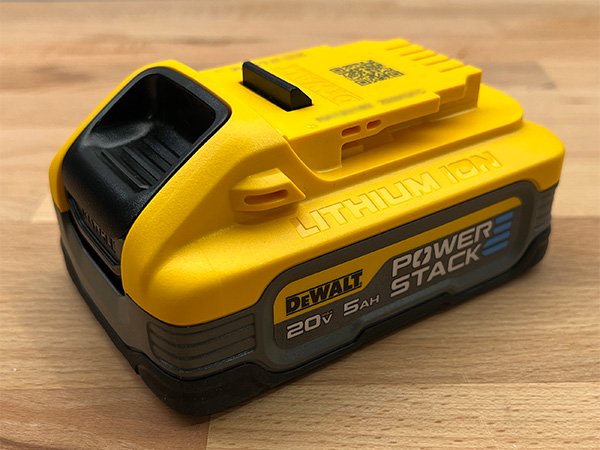
If you buy something through our links, ToolGuyd might earn an affiliate commission.
What does the future cordless power tool battery landscape look like? Is it centered around pouch-format Li-ion batteries?
Milwaukee Tool recently announced their first M18 pouch battery, a 6Ah battery under their new Forge line of next-gen batteries.

Dewalt launched two sizes of 20V Max pouch cell PowerStack batteries – a compact 1.7Ah battery, and a 5Ah battery.
Flex has 3 pouch cell 24V Max batteries – 3.5Ah, 6Ah, and 10Ah.
CAT – made by Positec – has a “Graphene” 5Ah battery.
Pouch cells definitely offer advantages over cylindrical cell Li-ion batteries, but do they represent the future of the cordless power tool industry?
Milwaukee’s next-generation MX Fuel batteries and upcoming M18 Forge 12Ah battery will be built using new tabless cylindrical Li-ion cells, showing that that advancements are still possible with the older form factor.
A year ago, Milwaukee introduced new High Output M12 batteries.
In the case of the upcoming M18 Forge 12Ah battery, Milwaukee opted for tabless cylindrical cells over pouch cells for reasons related to performance and cooling or thermal endurance.
Makita has yet to offer higher capacity or higher output batteries to their 18V line of cordless power tools. If their inability or unwillingness to introduce improved batteries over the years is tied to size and form factor constraints, they might be limited in what they could offer in the form of pouch cell batteries.
But what about moving to tabless batteries, where there might be minimal deviation from their existing battery pack shapes and sizes?
What about Bosch? Ryobi? Metabo HPT, Metabo, Kobalt, Ryobi, Festool?
Tool brands have introduced physically larger battery packs before, and so it might not be a big difference to do the same again with pouch cell batteries.
If cylindrical cell technology has a bit of runway left, it could potentially slow down pouch cell proliferation, especially if pouch cells are capacity-limited with respect to thermal endurance.
While there are only a couple of pouch cell cordless power tool batteries on the market or slated for release, all of them have capacities similar to existing 5- and 10-cell cylindrical batteries.
15-cell battery packs, such as Dewalt’s FlexVolt 9Ah and 12Ah batteries, and Milwaukee’s M18 12Ah battery, have grown popular over the years for high demand tasks and jobs where long runtime is a high priority.
Where are the equivalent pouch cell batteries?
Milwaukee will soon market their Forge 6Ah battery, and later their Forge 12Ah battery, with the first engineered with pouch cells and the latter with tabless cylindrical cells. Once both batteries are released, it will mean Milwaukee will have 4 different types of cordless power tool batteries active at the same time – standard, High Output, Forge pouch, and Forge tabless.
Users have gotten used to seeing battery packs with 18650 cells sold alongside newer higher output batteries built with 21700 cells.
Instead of pouch cell batteries being the future of the cordless power tool industry as many have thought, will it simply be a part of things?
Where are Dewalt’s PowerStack 10Ah, 12Ah, or 15Ah pouch cell batteries? Why hasn’t Bosch made a peep about the future of their 18V cordless tech?
CAT, a newcomer to the USA tool market, has a pouch cell battery. Where’s Ryobi’s?
If there are reasons that tool brands cannot move towards pouch cells, whether because of performance, size, or cooling reasons, does that suggest that there’s room for pouch cell tech to grow?
Could there still be room for cylindrical cell advancement, such as tabless designs that deliver higher current – at the least?
Pouch cell batteries are definitely shaking things up in the cordless power tool industry, but it’s apparently not the only technology thrusting things forward.
How big of a role will pouch cells play over the next few years? At this time, it’s looking like they will be a major part of the cordless power tool industry, but will share the stage with other new technologies.
I think it’s going to be an interesting couple of years.






